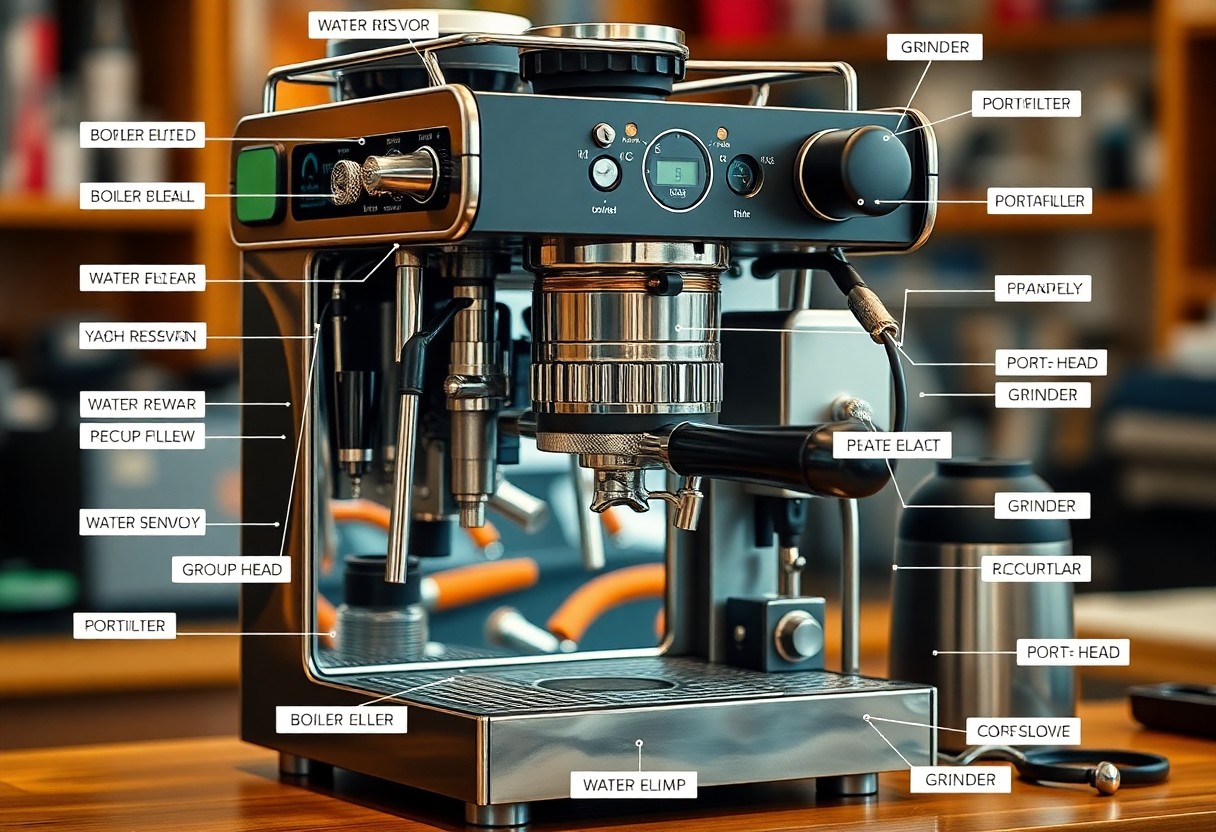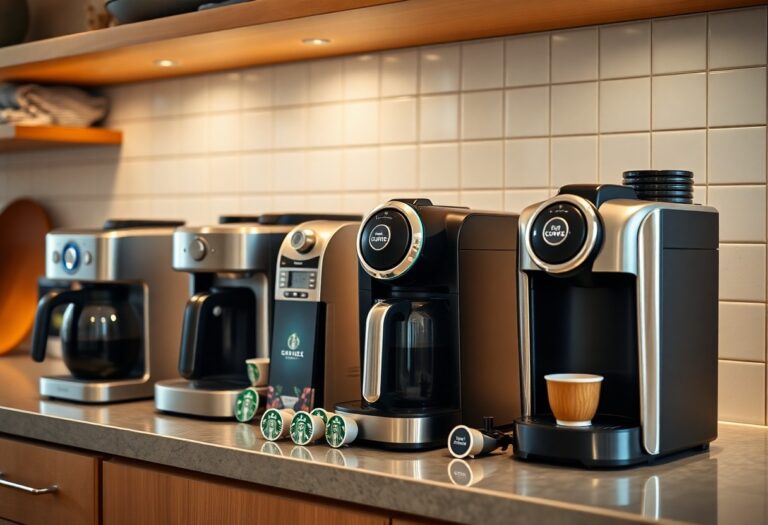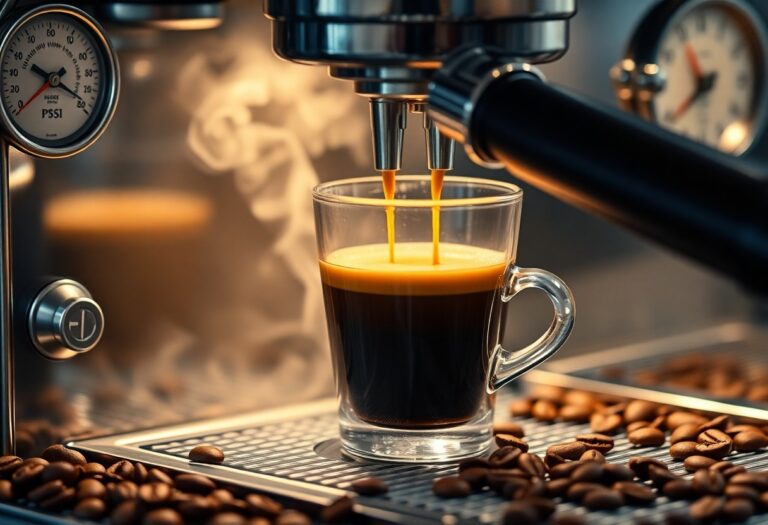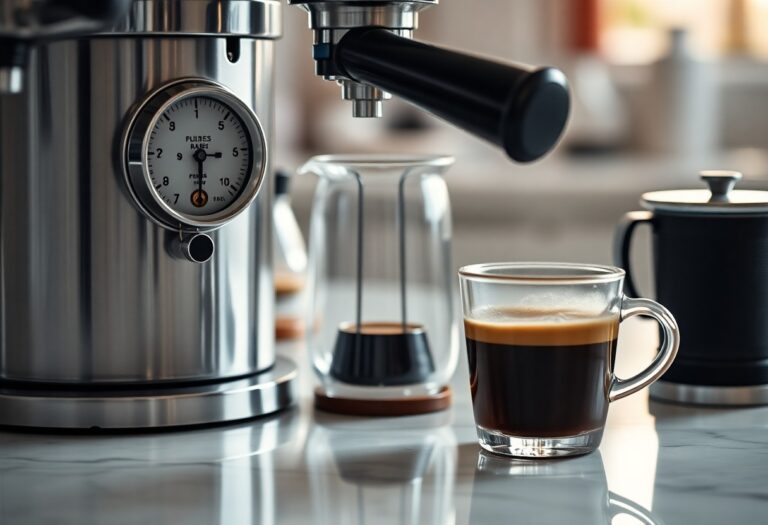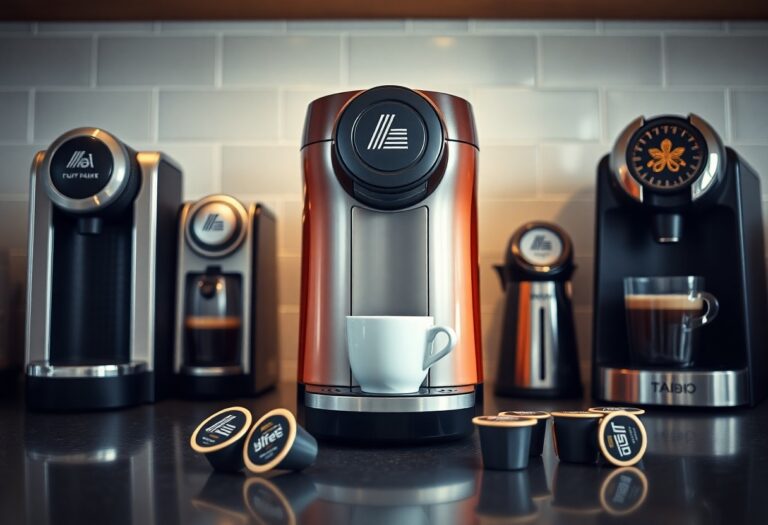What are the Parts of a Coffee Machine – Component Guide
If you’re a coffee enthusiast, understanding the inner workings of your coffee machine can enhance your brewing experience. Each component plays a vital role in how your coffee is brewed, affecting everything from flavor to temperature. In this guide, we will break down these parts, helping you to identify key elements such as the water reservoir, brew basket, and pump, while also highlighting potential hazards that come with maintaining your machine. By the end, you’ll have a comprehensive overview of your coffee maker and how to optimize its performance.
Key Takeaways:
- Coffee machines consist of several necessary components, including the water reservoir, heating element, and brew basket, each playing a vital role in the brewing process.
- The pump is responsible for delivering water to the coffee grounds, typically using either a manual lever or an electric mechanism for modern machines.
- Built-in grinders are found in certain coffee machines, allowing users to freshly grind their beans for a more flavorful cup of coffee.
- Many coffee machines include a drip tray to catch spills and excess water, making cleanup easier and helping to keep the brewing area tidy.
- Additional features such as programmable settings and automatic shut-off add convenience and safety to the overall coffee-making experience.
The Core Components of Coffee Machines
The fundamental parts of coffee machines are integral to delivering that perfect cup you crave every morning. With a better understanding of these components, you can enhance your coffee brewing experience and ensure longevity and efficiency in your machine.
Brewing Units: The Heart of the Brew
Your coffee machine’s brewing unit plays a pivotal role in extracting flavors from the coffee grounds. This component operates by forcing hot water through the coffee, ensuring that the optimal taste and aroma are released as you brew.
Water Reservoirs: The Lifeblood of Flavor
The water reservoir is where the journey of your coffee begins. Acting as the storage for fresh water, it enables the brewing process by delivering hydration to the coffee grounds, directly impacting flavor and extraction quality.
With most machines featuring removable water reservoirs, you can easily fill and clean them. Sizes may vary significantly, with some machines holding as little as 30 ounces while others accommodate over 80 ounces. The reservoir’s materials, whether plastic or stainless steel, can also influence the flavor profile, as certain materials retain heat better than others, affecting your brew consistency.
Heating Elements: Temperature Control for Excellence
Heating elements maintain the ideal temperature required for brewing. They ensure that water reaches around 200°F, which is necessary for optimal extraction. If your machine doesn’t heat properly, it may lead to under-extracted or burnt coffee.
| Type | Description |
| Thermal | Uses thermal conduction for consistent heating; generally slower but offers better temperature retention. |
| Rapid | Heats water quickly but may struggle with temperature consistency over longer brews. |
Heating element technologies have advanced, with options like thermal and rapid heating becoming commonplace in modern machines. The choice of heating type influences not just the speed of brewing but also how well the coffee retains its flavor profile, highlighting the importance of selecting a machine with a reliable heating system tailored to your brewing preferences.
| Effect on Brew Strength | Impact of Temperature |
| Too low a temperature leads to weak coffee. | Correct temperature enhances extraction, ensuring a fuller flavor. |
The Anatomy of Extraction
Extraction is the heart of brewing coffee, where flavors are unlocked through the right balance of time, temperature, and pressure. As water interacts with coffee grounds, desirable compounds dissolve into your brew, creating that perfect blend of acidity, sweetness, and bitterness. Understanding each component’s role in this process is crucial for achieving that coveted cup.
Pumps and Pressure: Crafting the Ideal Shot
Your espresso machine’s pump generates the pressure needed to extract flavors effectively. Most espresso machines operate at 9 BAR of pressure, which forces water through finely-ground coffee, ensuring a rich and flavorful espresso shot. Inconsistent pressure can lead to under-extraction or over-extraction, altering the taste significantly.
Filters and Portafilters: Barriers to Flavor
Filters and portafilters are vital to controlling the flow of water through your coffee grounds. A well-designed portafilter holds the coffee securely while allowing for proper extraction, whereas the filter ensures unwanted particles don’t end up in your cup.
Portafilters come in various sizes and designs, and their choice can have a substantial impact on the flavor profile of your coffee. For instance, single and double spouts allow for different extraction processes, while using high-quality filters can prevent clogging and under-extraction. Consider your grind size and tamping technique alongside these elements; both play crucial roles in ensuring that your brew reaches its full potential.
Grinder Mechanisms: Consistency is Key
The role of your grinder cannot be overstated; it’s the first point of influence in your brewing process. Consistency in grind size leads to uniform extraction, which is vital for a balanced cup of coffee. Burr grinders, typically favored over blade grinders, offer superior consistency by crushing beans evenly, allowing for optimal extraction.
Investing in a good grinder can dramatically affect your coffee’s flavor. A grinder that produces uneven particle sizes may lead to bitter or sour notes due to irregular extraction rates. Imagine brewing with a combination of finely ground coffee and larger chunks—the finer particles will over-extract, while larger ones remain under-extracted, resulting in an imbalanced taste. This balance can be achieved with precise burr grinders, ensuring a quality cup every time you brew.
Advanced Features That Elevate Your Brew
Exploring advanced features in modern coffee machines can significantly enhance your coffee experience. These upgrades often provide you with greater control over the brewing process and introduce new methods to enjoy your favorite beverages. Here’s what you can expect:
- Programmable settings
- Built-in milk frothers
- Connectivity to smart devices
For more detailed insights on each component, check out What Are the Parts of a Coffee Machine?.
| Feature | Description |
|---|---|
| Programmable Settings | Set your coffee timer and preferred strength for convenience. |
| Built-in Milk Frothers | Create creamy lattes and cappuccinos effortlessly. |
| Connectivity | Control your machine remotely via smartphone apps. |
Programmable Settings: Tailoring Your Experience
The convenience of programmable settings allows you to customize your brew according to your schedule. Most modern machines let you decide when to start brewing and how strong your coffee should be, ensuring it’s ready when you are, giving you a personal touch to each cup.
Built-in Milk Frothers: The Art of the Creamy
Owning a coffee machine with a built-in milk frother lets you indulge in café-style beverages at home. In just moments, you can froth milk to your desired texture, creating rich, creamy layers that enhance your coffee drinks, from lattes to macchiatos, delivering café-quality results without leaving your kitchen.
A built-in milk frother might include various settings to produce different textures, from light froth for a cappuccino to dense whipped foam for a flat white. Many machines offer steam wands or automatic frothing options, making it easy to experiment with latte art or simply enjoy a flavorful brew topped with creamy perfection.
Connectivity: Smart Coffee Machines in a Digital Age
Smart coffee machines add an exciting dimension to your brew experience with connectivity features allowing for remote operation. Simply connect your machine to your smartphone or smart home system, and you can adjust settings or schedule brews from anywhere in your home.
With connectivity, you can receive notifications when your coffee is ready or when maintenance is required. Some machines even support voice commands through digital assistants, simplifying your morning routine and ensuring your perfect cup is just a command away.
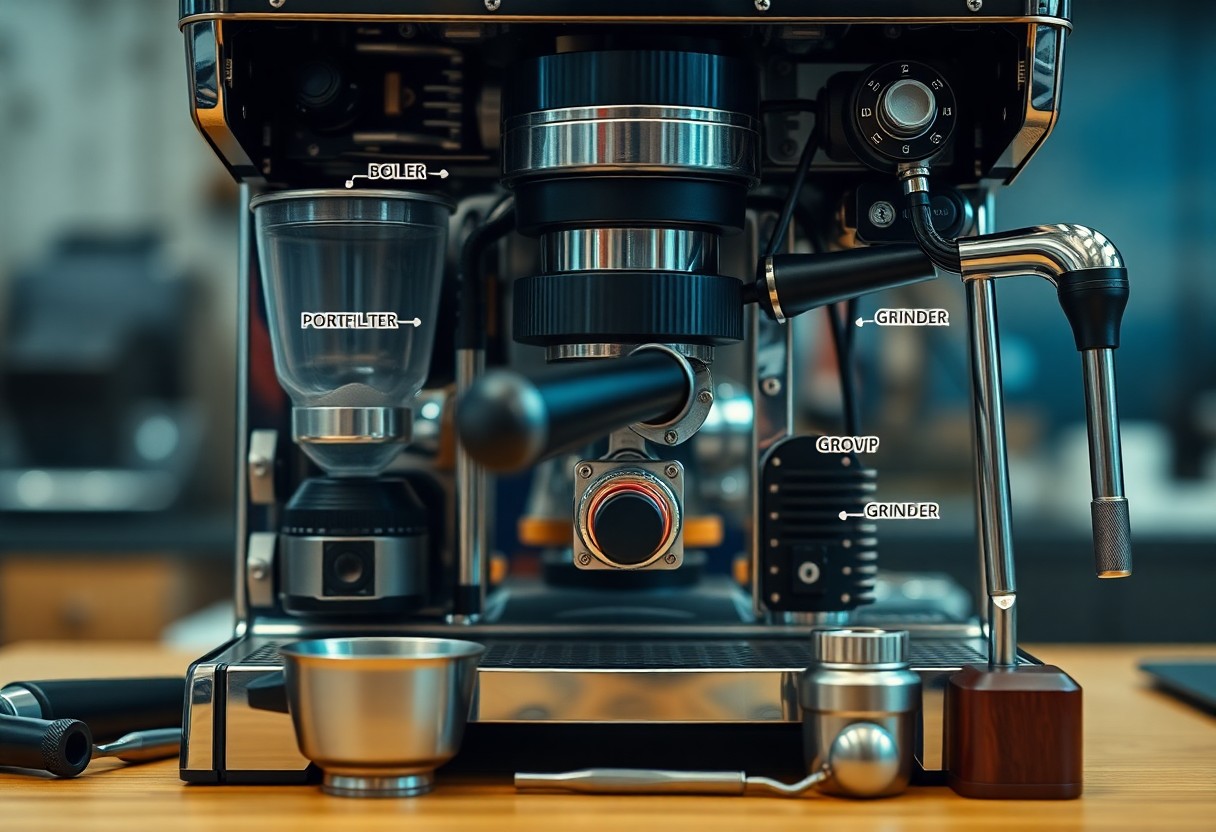
Maintenance Matters: Preserving Machine Integrity
Regular maintenance extends the life of your coffee machine and ensures consistent performance. Neglecting to care for the components can lead to decreased efficiency and potential malfunctions. Establishing a routine that includes cleaning, undoscaling, and part inspections will not only enhance your coffee experience but also save you from costly repairs down the line.
Cleaning Protocols: Best Practices for Longevity
Adopting a thorough cleaning routine will keep your coffee machine in peak condition. Aim to clean removable parts daily, including the brew basket and water reservoir. Monthly deep cleaning with a descaling solution is important to eliminate mineral buildup. Always refer to your machine’s manual for specific cleaning instructions, as different models may have unique needs.
Troubleshooting Common Issues: Quick Fixes Every User Should Know
When problems arise, addressing them promptly can prevent more significant issues. Common problems include weak coffee, leaking, or strange noises during the brewing process. Many of these can be resolved by checking the water supply, ensuring the machine is properly assembled, or cleaning clogs in the brew group.
If your machine produces weak coffee, a likely culprit is the coffee grind size; try a finer grind for stronger extraction. For leaks, inspect seals and connections for damage—if you find any, replacing a worn gasket may solve the problem. For unexpected noises, check for any loose parts or obstructions in the brewing pathway. Keeping an eye out for these issues and familiarizing yourself with basic repairs can prevent the need for professional servicing.
Replacement Parts: Knowing When and What to Replace
Familiarizing yourself with the components of your coffee machine allows you to identify which parts need replacement over time. Common items that may require attention include water filters, seals, and brewing elements. Replacing these components as they wear out will help prevent larger issues and maintain optimal brewing conditions.
Many coffee machines come with a general lifespan for certain components, such as a water filter needing replacement every two months or after brewing 60 pots. If your coffee machine shows signs of decreased performance despite regular cleaning, inspect parts for wear and tear. Purchasing high-quality replacement parts directly from the manufacturer or reputable suppliers ensures optimal compatibility and performance, enabling your machine to serve you high-quality coffee for years to come.
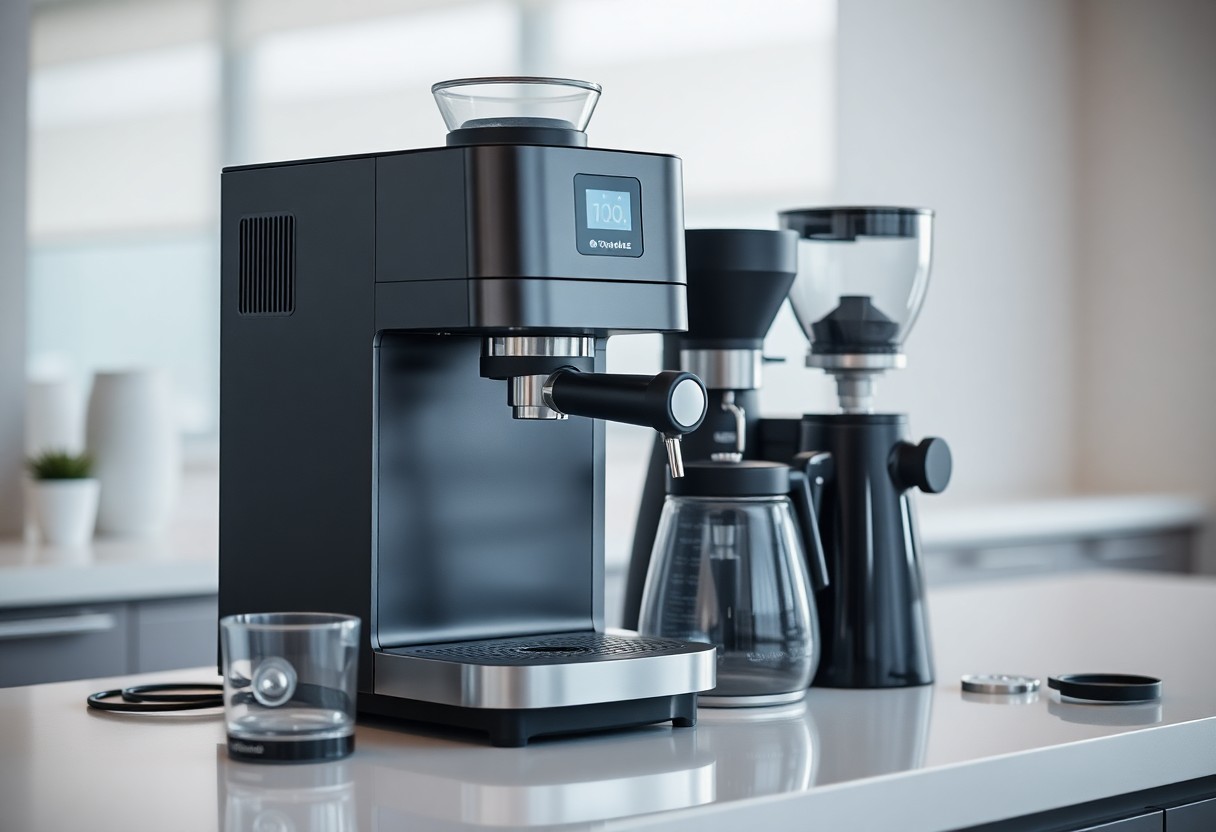
The Future of Coffee Technology
The modern coffee machine is evolving with rapidly advancing technology, promising to enhance your brewing experience and refine the quality of your coffee. As smart home integration becomes increasingly popular, expect machines capable of customization through smartphone apps, allowing you to control brewing settings remotely and receive maintenance alerts. Additionally, innovations like AI-driven brewing algorithms will recommend ideal coffee profiles tailored to your specific taste preferences, making each cup uniquely yours.
Innovations on the Horizon: Where Coffee Machines are Headed
Emerging technologies in coffee machines focus on convenience, efficiency, and user experience. Features such as built-in grinders, automated cleaning cycles, and energy-saving modes are becoming standard, making your mornings smoother. Furthermore, advancements in temperature control and pressure consistency are set to give coffee aficionados greater control over their brewing parameters, leading to a richer flavor profile and improved extraction.
Sustainability Trends: Eco-Friendly Choices in Coffee Brewing
Eco-conscious consumers are driving a noticeable shift toward sustainable coffee brewing practices. Many new machines now focus on reducing waste by using renewable materials and minimizing energy consumption. Coupled with innovations in recycling programs and biodegradable coffee pods, the coffee industry is making sustainable choices more accessible for everyday users, enhancing both your enjoyment and environmental impact.
As you explore eco-friendly options, consider machines that utilize recyclable materials or are designed for longevity to reduce landfill waste. Brands like Breville and DeLonghi are investing in sustainability by offering models that can brew with less energy and are compatible with reusable filters. Additionally, some coffee machines are implementing smart energy-saving features that power down when not in use. With rising awareness and demand for sustainable products, you can make conscious choices that align with your values while enjoying your favorite brew.
To wrap up
With these considerations, you now have a comprehensive understanding of the vital components of a coffee machine. This knowledge will empower you to choose the right model for your needs and maintain your machine effectively. By familiarizing yourself with parts like the pump, heating element, and brew basket, you can ensure a superior coffee experience. Whether you’re a casual drinker or a coffee aficionado, knowing your machine inside and out enables you to make informed decisions and elevate your brewing skills.
FAQ
Q: What is the purpose of the water reservoir in a coffee machine?
A: The water reservoir is designed to hold the water that will be used to brew coffee. It allows for easy filling and can vary in size depending on the machine’s capacity. A larger reservoir means you can brew more cups without needing to refill it frequently.
Q: How does the brewing group function in a coffee machine?
A: The brewing group is the component where the water and coffee grounds mix to create the final beverage. It typically includes a chamber where coffee grounds are placed, and hot water is forced through the grounds, extracting flavors and aromas. Some machines have a removable brewing group for easier cleaning and maintenance.
Q: What role does the heating element play in coffee machines?
A: The heating element is responsible for heating the water to the optimal brewing temperature. Depending on the design of the coffee machine, it may use an immersion heater or a thermoblock system. This ensures that the water reaches the right temperature for extraction, enhancing the coffee’s flavor.
Q: Why is the coffee grinder an important part of certain coffee machines?
A: For machines that feature an integrated coffee grinder, this component grinds coffee beans to the desired consistency just before brewing. This freshness can significantly improve the taste of the beverage. Different grinders, such as blade or burr grinders, can affect the grind size and consistency, impacting the flavor profile of the coffee.
Q: How does the drip tray function in a coffee machine?
A: The drip tray collects any overflow or spills that occur during the brewing process. It helps keep the machine clean and prevents messes on the countertop. Many drip trays are removable for easy cleaning, ensuring that maintenance of the coffee machine is hassle-free.

